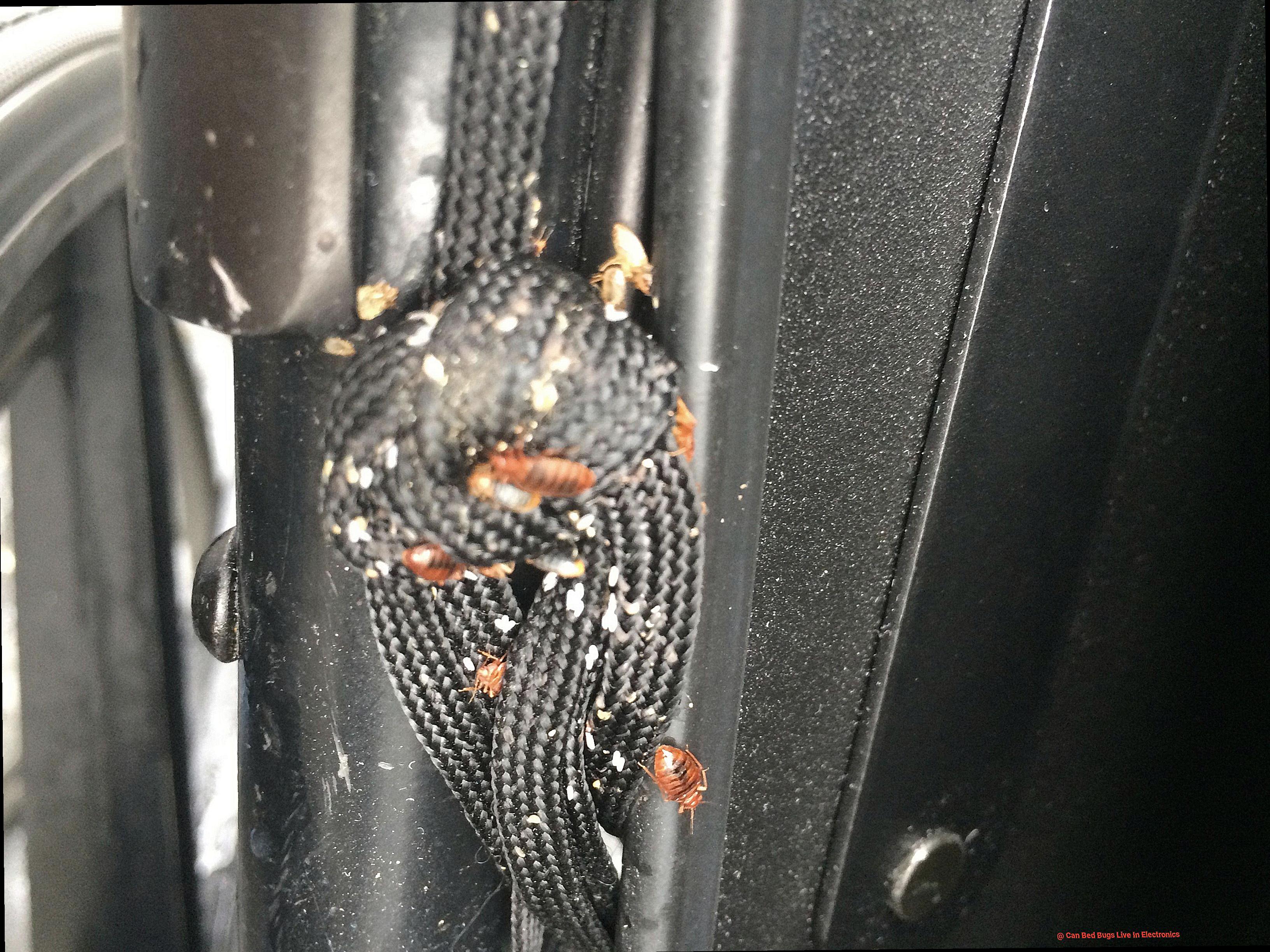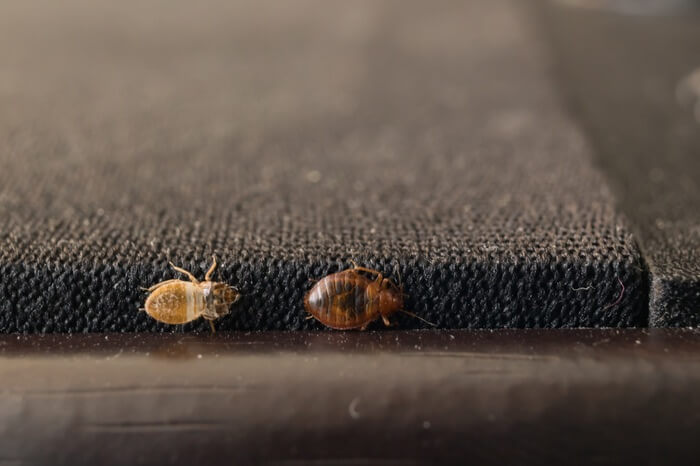Have you ever been awoken by strange sounds emanating from your electronics in the middle of the night? What if we told you that these sounds could be more than just the whirring of circuits and capacitors, but rather the unsettling rustling of a bed bug colony living inside your devices? It may seem like something out of a horror movie, but unfortunately, it’s all too real – bed bugs can indeed live in electronics.
These pests are infamous for their ability to infest homes, furniture, and bedding with ease. However, what many people don’t realize is that they can also take up residence in unexpected places – like inside your electronic devices.
Despite their small size, bed bugs are incredibly resourceful creatures that can squeeze through even the tiniest gaps and crevices in your gadgets to set up shop.
So if you’re wondering whether your beloved gadgets are safe from these creepy crawlies, the answer is a resounding no.
In this blog post, we’ll delve into the nitty-gritty details of how and why bed bugs can infiltrate your electronics and wreak havoc on both your devices and your peace of mind. But don’t worry – we won’t leave you hanging without solutions.
We’ll also provide tips on how to prevent an infestation or deal with one if it’s already taken hold.
So buckle up and keep reading to learn everything you need to know about bed bugs in electronics.
What Are Bed Bugs?
Contents
Bed bugs are small, reddish-brown insects that can infest any household item, including electronics. These pesky critters are about the size of an apple seed and have a flat, oval-shaped body that can easily hide in tight spaces like creases and seams. But why are they attracted to electronics?
It all comes down to heat and carbon dioxide emissions. These signals alert bed bugs that a potential blood meal is nearby, which is exactly what they’re after.
Once they sneak into the vents and ports of your electronic devices, they can be difficult to detect and eradicate.
But the good news is that bed bugs cannot actually live inside your electronics. Electronic devices do not provide the warm and humid conditions with plenty of hiding places that bed bugs love. Without access to a human host nearby, they cannot reproduce inside electronic devices.
Therefore, if you’re worried about finding bed bugs in your electronics, know that they won’t be able to thrive in that environment.
However, just because they can’t live inside your electronics doesn’t mean you’re completely safe from bed bug infestations. Bed bugs are excellent hitchhikers and can easily travel from place to place on clothing, luggage, and other personal belongings. This is why even the cleanest homes and hotels can become infested.
It’s important to regularly inspect and treat your electronic devices as well if you suspect a bed bug infestation in your home or hotel room.
While bed bugs do not transmit diseases to humans, their presence can cause significant emotional distress and sleep disturbances. A single female bed bug can lay up to 500 eggs in her lifetime, making it challenging to eradicate them once they have infested an area. Therefore, seeking professional help is essential to rid your home of these pesky pests.
What Are the Signs of a Bed Bug Infestation?

These elusive pests are tiny and can hide in the most hard-to-reach places, making them difficult to detect. However, there are telltale signs that can indicate a bed bug infestation.
One of the most obvious signs is the presence of bites on your skin. Bed bug bites usually appear in clusters or a line on exposed skin, such as arms and legs. These bites can be itchy and may even cause an allergic reaction in some people. If you notice these bites, it’s important to inspect your home for any other signs of bed bugs.
Another sign of a bed bug infestation is the presence of bloodstains on your bedding or clothing. Since bed bugs feed on human blood, they leave behind small bloodstains when they are crushed. You may also see dark spots or smears on your sheets, which are fecal matter left behind by the bugs.
Bed bugs also shed their skin as they grow, so you may find empty exoskeletons or shells around your bed or other furniture. If you do spot any of these signs, don’t wait to take action.
In addition to these physical signs, you may also notice a sweet, musty odor in your bedroom, which is caused by bed bug pheromones. This scent is a clear indication that there is a bed bug infestation present.
And it’s important to remember that bed bugs aren’t limited to just beds and bedding materials – they can hide in electronics too, such as alarm clocks or laptops.
To prevent future infestations, it’s crucial to maintain good hygiene practices in your home and inspect all areas regularly for any signs of bed bugs. If you do suspect an infestation, act quickly and seek professional help if necessary.
By identifying the signs early on, you can prevent the infestation from spreading and causing further discomfort.
How Do Bed Bugs Get Into Electronics?
Bed bugs are sneaky little creatures that can creep into the most unexpected places, including your beloved electronics. These blood-sucking insects are attracted to warm and cozy spots, making your gadgets an ideal hiding place for them. But how do these pesky critters manage to get into your electronics in the first place?
Well, bed bugs are expert hitchhikers. They can easily move from one place to another through clothing, luggage, and furniture. Once they find a warm and cozy spot in your electronics – such as the gaps between a laptop screen and its frame or the holes in a speaker – they can easily slip in and make themselves at home.
Their flat bodies make it easy for them to fit into tight spaces such as cords and cables that connect various devices. What’s more, bed bugs are attracted to the heat that electronic devices give off, which makes them an irresistible hiding spot for these pesky pests.
Bed bugs tend to hang out in areas where people spend a lot of time, such as bedrooms and living rooms. This makes electronics especially vulnerable to bed bug infestations. So, if you’re not careful, these tiny insects might ruin your gadgets and give you sleepless nights.
To prevent an infestation, be sure to inspect all your electronic devices thoroughly before bringing them into a potentially infested area. Use a flashlight to check for any signs of bed bugs, such as eggs or fecal matter. If you suspect an infestation, it’s best to seek professional help immediately before attempting any DIY removal methods.
Can Bed Bugs Survive in Electronics?
Well, unfortunately, the answer is yes – they can survive in electronics. These tiny, blood-sucking insects are notorious for their ability to hide in the smallest of spaces, and electronics are no exception.
Bed bugs are attracted to heat and carbon dioxide, both of which are emitted by electronic devices such as laptops, televisions, and gaming consoles. This makes them a prime target for bed bugs seeking a cozy hiding spot.
They can crawl into the crevices and small spaces inside electronic devices to lay their eggs and even feed on the electrical components, causing damage over time.
The warmth generated by electronic devices provides an optimal environment for bed bug growth and reproduction. So if there’s an infestation in a room with electronic devices, you can bet that the bugs will find their way inside.
While bed bugs can live in electronics, they cannot survive without feeding for long periods. These pesky insects require regular blood meals to survive and reproduce. This means that if an electronic device is left unused for an extended period, the bed bugs inside may die due to a lack of food.
To prevent bed bugs from infesting your electronics, it’s crucial to inspect them thoroughly before bringing them into a potentially infested area.
If you suspect that bed bugs have already made their way into your devices, it’s important to treat them as part of your overall bed bug treatment plan. This may involve using heat treatments or insecticides specifically designed for electronics.
What Kinds of Electronics are Susceptible to Bed Bug Infestations?
Perhaps you enjoy unwinding in front of the TV or listening to music on your entertainment system? If so, you may be surprised to learn that bed bugs can infest these electronics.
Bed bugs are notorious for being attracted to warm, dark, and secluded spaces, which makes electronic devices a prime target for these creepy crawlies. Laptops, computers, and gaming consoles are particularly susceptible as they generate heat and have numerous small crevices and openings where bed bugs can hide. However, bed bugs can also infest televisions, DVD players, and other entertainment systems for the same reasons.
But it’s not just larger electronics that are at risk. Even smaller devices like alarm clocks, radios, and phone chargers can provide bed bugs with a cozy hiding place. These pests don’t infest electronics because they are drawn to the devices themselves; instead, they use them as a means of transportation and as a hiding spot.
It’s essential to inspect all electronics thoroughly for signs of bed bug infestation before introducing them into your home. Bed bugs can hitch a ride on electronic devices when they move from one location to another. Therefore, it’s critical to check them carefully before bringing them into your living space.
Also Read: Bed Bugs In Electronics?
How Can You Prevent and Treat a Bed Bug Infestation in Your Electronics?
These pesky critters are attracted to the warmth and tight spaces of devices like laptops, gaming consoles, and alarm clocks, making them an ideal hiding spot and mode of transportation. But fear not. As a bed bug expert, I am here to give you insider tips on how to prevent and treat a bed bug infestation in your electronics.
Preventing a bed bug infestation in your electronics is essential. Regularly cleaning and inspecting your electronics for any signs of infestation is crucial. Before bringing any used or second-hand electronics into your home, be sure to thoroughly check them for bed bugs first. When traveling, keep your electronics in sealed plastic bags to prevent bed bugs from infesting them.
If you suspect that your electronics have been infested with bed bugs, the first step is to isolate the affected items. Remove any cords or cables and place the electronics in a sealed plastic bag. This will prevent bed bugs from spreading to other areas of your home.
Next, use a vacuum cleaner with a crevice tool attachment to remove any visible bed bugs from the surface of the electronics. Ensure you vacuum all cracks and crevices thoroughly. After vacuuming, seal the vacuum bag tightly and dispose of it outside of your home.
Heat treatment is also an effective way of killing bed bugs in your electronics. Place the isolated items in a sealed plastic bag and leave them in a hot car or direct sunlight for several hours. The heat will kill any bed bugs and eggs present.
If you are unable to treat the infestation yourself, it may be necessary to contact a professional pest control service. They can provide more effective treatment options such as fumigation or heat treatment.
Conclusion
In conclusion, it’s a fact that bed bugs can indeed take up residence in your electronics. These pesky critters are notorious for infesting homes, furniture, and even bedding with ease. However, what many people don’t realize is that they can also sneak into the nooks and crannies of your electronic devices.
Bed bugs are attracted to heat and carbon dioxide emissions, which signal to them that a potential blood meal is nearby. Once they make their way into the vents and ports of your electronics, they can be incredibly challenging to detect and eliminate.
It’s important to note that while these pests cannot technically live inside your electronics, they can still hide within them. Therefore, it’s crucial to inspect all electronics thoroughly for signs of bed bug infestation before bringing them into your home. Regular cleaning and inspection of your devices for any signs of infestation is also key.
If you suspect that bed bugs have invaded your electronics, act fast. Isolate the affected items immediately by removing cords or cables and placing them in a sealed plastic bag to prevent further spread. Vacuuming all cracks and crevices thoroughly is also recommended before using heat treatment or seeking professional help.
Prevention is always better than cure when it comes to bed bugs. Regularly inspecting personal belongings for signs of these pests after traveling or staying in a hotel can help prevent future infestations. Seeking professional help is also essential if an infestation has already taken hold as these pests can cause significant emotional distress and sleep disturbances if left untreated.






